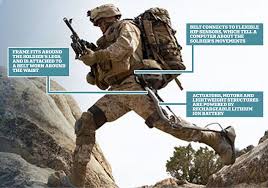
Breaking News
 US Banks Going BROKE as Fed's Emergency Lifeline EXPOSED
US Banks Going BROKE as Fed's Emergency Lifeline EXPOSED
 I've Had Enough of These People Too! - Someone Had To Say It - Cuz We're All Thinking It
I've Had Enough of These People Too! - Someone Had To Say It - Cuz We're All Thinking It
 Make Your Own Garden Pavers For Super Cheap
Make Your Own Garden Pavers For Super Cheap
 OpenAI CFO Seeks US Government Backing,...
OpenAI CFO Seeks US Government Backing,...
Top Tech News
 HUGE 32kWh LiFePO4 DIY Battery w/ 628Ah Cells! 90 Minute Build
HUGE 32kWh LiFePO4 DIY Battery w/ 628Ah Cells! 90 Minute Build
 What Has Bitcoin Become 17 Years After Satoshi Nakamoto Published The Whitepaper?
What Has Bitcoin Become 17 Years After Satoshi Nakamoto Published The Whitepaper?
 Japan just injected artificial blood into a human. No blood type needed. No refrigeration.
Japan just injected artificial blood into a human. No blood type needed. No refrigeration.
 The 6 Best LLM Tools To Run Models Locally
The 6 Best LLM Tools To Run Models Locally
 Testing My First Sodium-Ion Solar Battery
Testing My First Sodium-Ion Solar Battery
 A man once paralyzed from the waist down now stands on his own, not with machines or wires,...
A man once paralyzed from the waist down now stands on his own, not with machines or wires,...
 Review: Thumb-sized thermal camera turns your phone into a smart tool
Review: Thumb-sized thermal camera turns your phone into a smart tool
 Army To Bring Nuclear Microreactors To Its Bases By 2028
Army To Bring Nuclear Microreactors To Its Bases By 2028
 Nissan Says It's On Track For Solid-State Batteries That Double EV Range By 2028
Nissan Says It's On Track For Solid-State Batteries That Double EV Range By 2028
Army Wants Tech to Improve Exoskeleton Fit on Soldier

The U.S. military has been attempting to design futuristic, performance-enhancing exoskeletons for combat soldiers since the late 1990s, but the technology often interferes with the way humans move.
"The human-exoskeleton interface raises a number of potential issues. Most exoskeletons contain rigid elements that can restrict natural movement," according to a recent request for information solicitation posted on www.sibr.gov, a government website for the Small Business Innovation Research (SBIR) program, which is designed to encourage small business to engage in federal research and development.
"The objective of this effort is to demonstrate an interface that can safely join an exoskeleton (which is potentially rigid and/or heavy) to a human being (which is fleshy and load-limited) while simultaneously optimizing the mobility of and minimizing the injury to a dismounted soldier," it states.

 Carbon based computers that run on iron
Carbon based computers that run on iron

